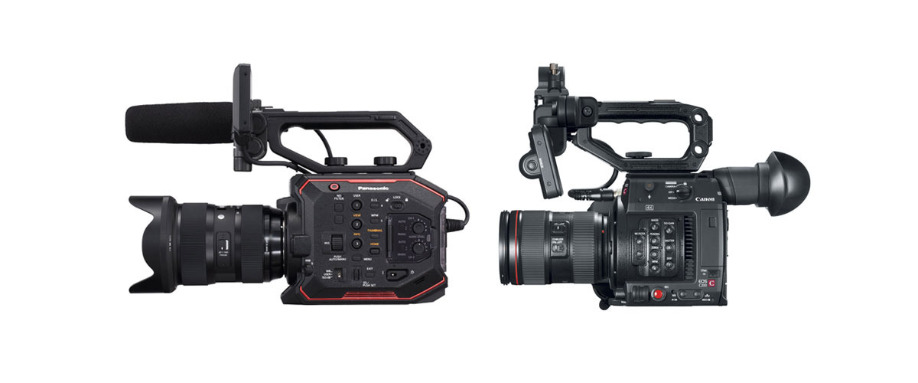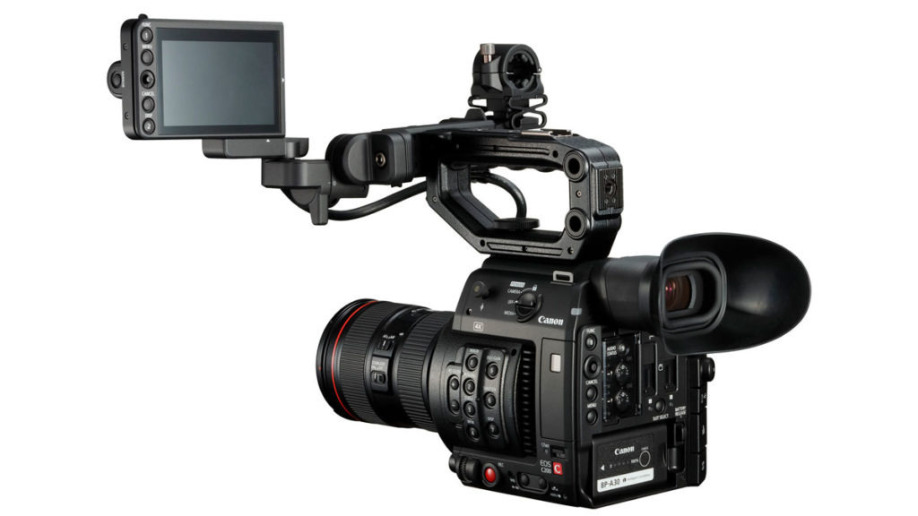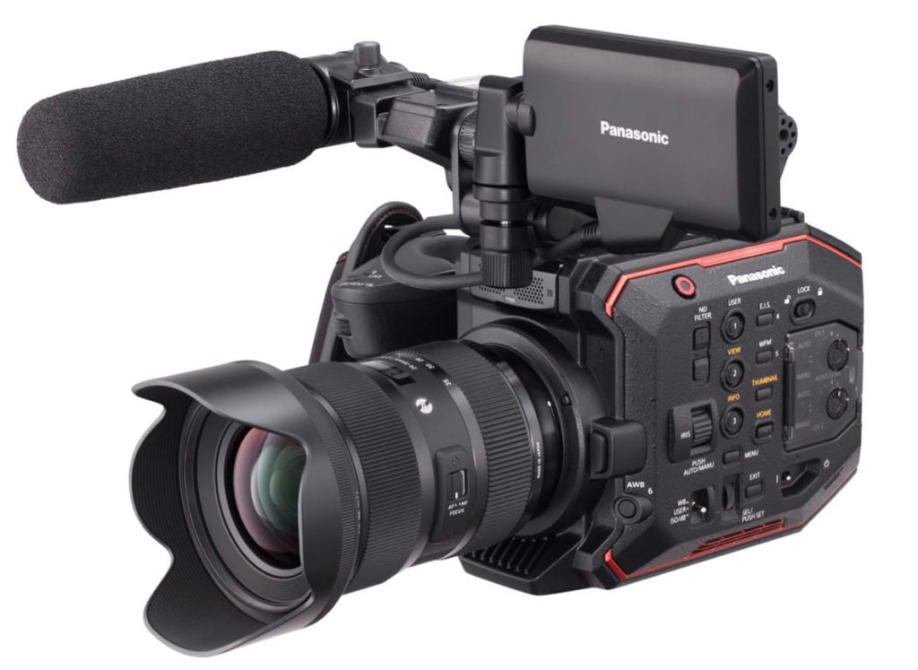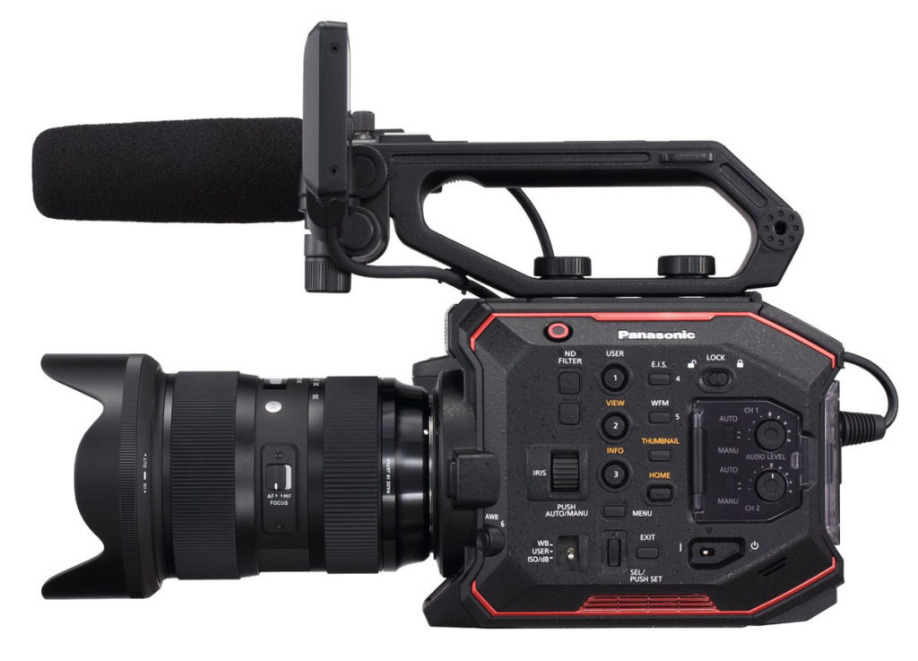Panasonic EVA1 Vs. Canon C200 – Which Is Better For Filmmakers?
Panasonic EVA1 Vs. Canon C200 – Which Is Better For Filmmakers?

This is been one hell of a week for camera announcements. Just a couple days ago, Canon announced their brand new C200, and today Panasonic finally unveiled their new budget-friendly cinema camera – the EVA1. Both cameras are clearly aimed at the same market (they’re each priced around $8k and share similar features/ergonomics), and both offer a lot of bang for your buck… At the same time, there are some pretty distinct differences between the two that should be taken into account before puling out your wallet to pick one up.
I haven’t had an opportunity to shoot with either camera yet (I wasn’t involved in any sort of beta testing on these models), so my thoughts as outlined here are largely based on specs. As such, I’ll be sure to do some more comprehensive reviews on both cameras in the future once I get to test them in the real world.
Let’s start with Canon’s C200 –

After many years of seemingly ignoring their video customers demands for better features and more competitive price points, Canon finally seem to be taking a step in the right direction with this camera. In fact, if I were to buy a C-series camera today, I would pick up a C200 in a heartbeat over a C300 II, as it offers more value in some respects at a lower price point.
Here are the specs –
- Super 35mm CMOS Sensor
- Dual Pixel CMOS AF Technology
- Dual DIGIC DV 6 Processors
- 4K DCI and UHD, 1920 x 1080
- 59.94p, 50p, 29.97p, 25p, 24p, 23.98p
- Canon RAW Light, MP4, MP4 Proxy
- Integrated EVF, 2 x XLR Audio Inputs
- Rotating 4″ LCD Monitor, Camera Grip
- 1 x CFast Card, 2 x SD Card Slots
- 1 x SDI Output, 1 x Ethernet Connector
- $7500

I don’t doubt for a second that the C200 will produce beautiful images, as it combines Canon’s excellent color science with a new RAW codec. The very fact that RAW can be recorded internally will be a huge selling point for narrative filmmakers, although 128GB CFast cards are only expected to record about 15 minutes of content.
That, combined with the fact that the camera only has a single C-Fast slot will likely make data management on set a bit trickier than with the C300 II or other non-Canon cinema cameras. Even still, that wouldn’t be a dealbreaker for me personally as CFast cards will only continue to drop in price over the next year, which will make this a non-issue over time.
The camera has some standout features as well, such as Dual Pixel autofocus which is ideal for those shooters operating as a one-man-band, and who need to pull their own focus. This isn’t a feature I would particularly use a lot myself, but I know many others who would!
The ergonomics of the camera look excellent too, and are right in line with Canon’s other C-series cameras which I’ve enjoyed using in the past.
So in a nuthsell, Canon finally seems to have gotten it right. A reasonably priced cinema camera that can record RAW internally and is actually positioned to be competitive in the market…
At the same time, it’s already starting to feel like Panasonic’s brand new EVA1 is raining on Canon’s parade.
PANASONIC EVA1

For years we have been waiting for Panasonic to release an AF100 replacement. At one point, Panasonic led the ultra low budget indie film community with their DVX100, although they eventually lost their footing when the large sensor camcorder market took off, and they were left behind.
Since then, they’ve offered some fantastic options on the low end (GH2/3/4/5), and the high end (Varicam), but they’ve had a gap in their product lineup where the AF100 once sat. It look them many years, but they have finally come out swinging with a new camera to fill this gap, and one that looks like it could truly disrupt the market.
We don’t have all of the details on the EVA1 yet, as it was just unveiled today. But here is what we do know –
- Super 35 5.7K Sensor
- 5.7K Raw output (with firmware update)
- 400mbps / 10bit / 4:2:2 internal recording
- Canon EF Mount
- Dual Native ISO
- V-Log Picture Profile
- Up to 60p in 4K
- Up to 240fps in 2K
- Dual SD Card slots
- Available this fall
- Approximate price: $8000
It may have taken Panasonic ages to finally release this beast, but it looks like it was worth the wait!
Everything about the camera on paper looks incredible. It seems to offer so many of the same features as it’s bigger brothers (The Varicam/Varicam LT) in a smaller package and for less money.
For instance, much like the Varicam the EVA1 will have dual native ISO, which will make it an incredible option for low light shooters. It also includes V-Log out of the box, and the same great color science that Panasonic has been delivering with their higher end Varicams.
I recently released this short film that I shot on the Varicam LT, and really loved the images I got off the camera. It was so easy to expose and grade, and I can only imagine similar quality and results can be expected of the EVA1 too.

I especially love the fact that the EVA1 records oversampled 4K internally. This means that it’s recorded images will benefit from the added resolution of the 5.7K sensor, producing footage that will likely be superior to many cameras that shoot straight 4K DCI. As a bonus, in a future firmware update the EVA1 will be able to output 5.7K RAW, which is pretty incredible if you need higher resolution capture.
I’m also thrilled to see that Panasonic have opted for a full Super 35mm sensor, and not a MFT sensor. I have nothing against MFT sensors, but for many of us shooting narrative material, Super 35mm is optimal for so many reasons… Panny really seem to have gotten it right across the board.
CANON C200 VS PANASONIC EVA1
There’s no doubt in my mind the Canon C200 will be a great camera, but I can’t help but wonder how on earth it’s going to compete with the Panasonic EVA1…
Nearly all of the standout features that Canon offers, Panasonic can match or beat. This includes: Color science, internal 4K, native EF mount, Super 35mm sensor, and more.
Panasonic clearly have more specialty features, such as 240fps recording, dual native ISO, and 5.7K RAW capability, just to name a few. Although Canon does offer some of it’s own perks as well, such as internal RAW and Dual Pixel AF, which may be a draw for some users…
Personally speaking, I would hands down take the EVA1 over the C200. For the same price, the EVA1 simply does a lot more, and any of the C200’s specialty features that the EVA1 lacks wouldn’t be deal breakers for me. This includes internal RAW – as I know first hand just how flexible Pansonic’s 400mbps codec can be in post.
More importantly though, I like to invest in products from companies who are headed in a direction I believe in. I’m not saying that Canon isn’t, and in fact I think the C200 marks a well thought out change of course for their business. At the same time though, they still have an uphill battle to fight given their recent track record, and at the moment I simply believe in Panasonic as a brand more whole heartedly.
Recent Posts
-
LiveU Schedule & LiveU Nexus: Streamline, Automate, and Route with Confidence
LiveU Schedule & LiveU Nexus Streamline planning, automate orchestration, and route every IP fe …Sep 24th 2025 -
Canon Trade-In + Trade-Up | Upgrade & Save (Sept 22–Oct 5, 2025)
LIMITED-TIME OFFER Omega Broadcast & Cinema Canon Trade-In + Trade-Up | Upgrade & Save (Sept 22 …Sep 23rd 2025 -
RED KOMODO & KOMODO-X Trade-In: Step Up to V-RAPTOR
LIMITED-TIME TRADE-IN Omega Broadcast & Cinema RED KOMODO & KOMODO-X Trade-In → V-RAPTOR XE / [X …Sep 23rd 2025


